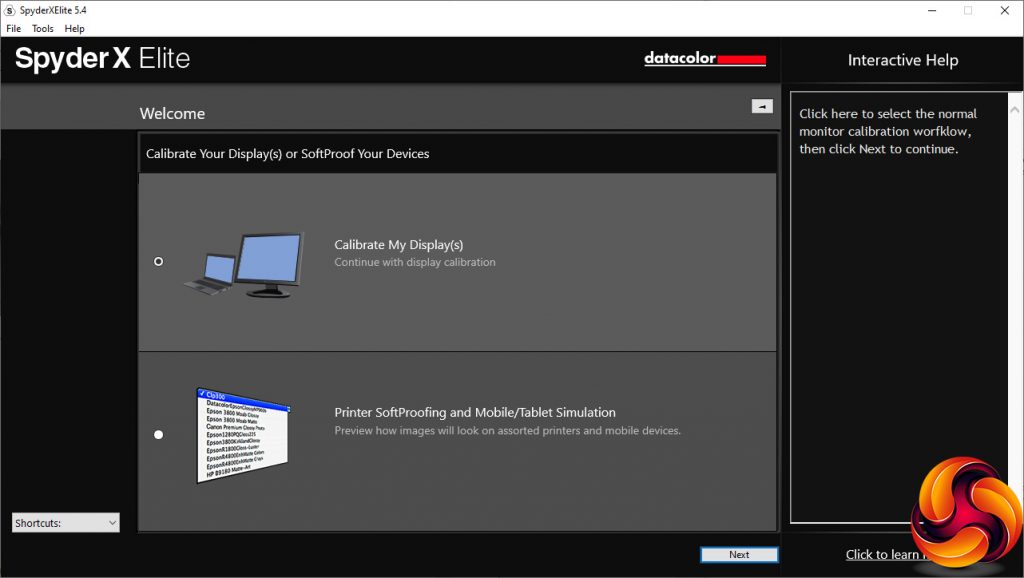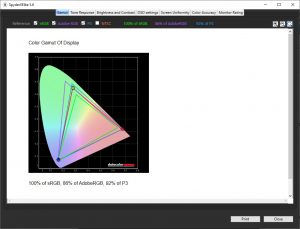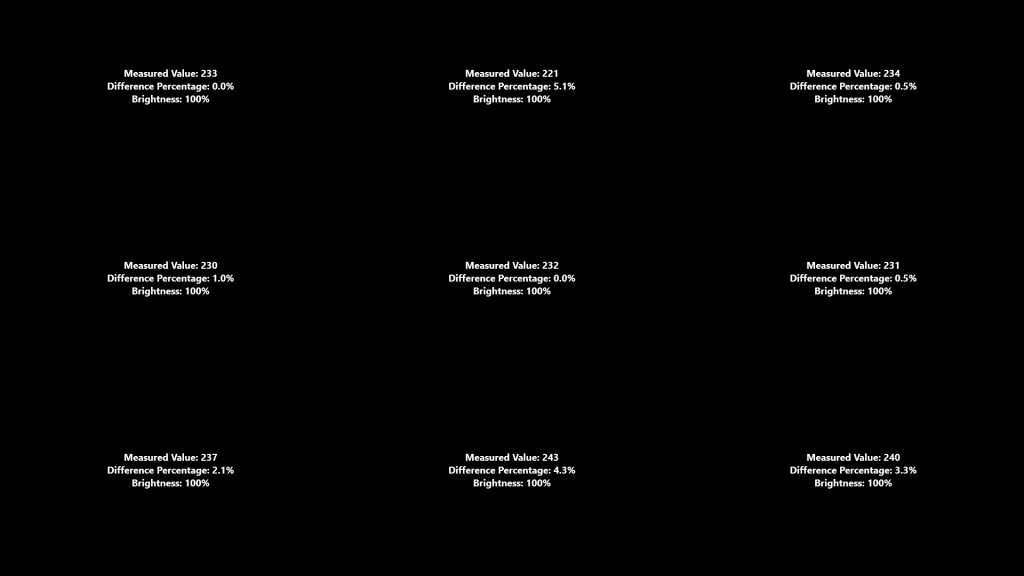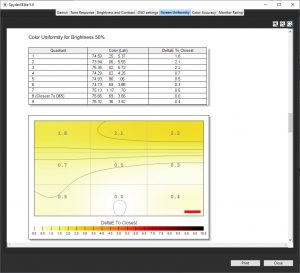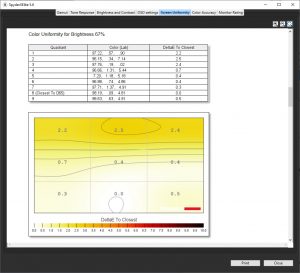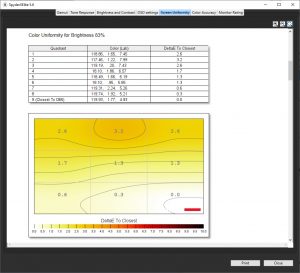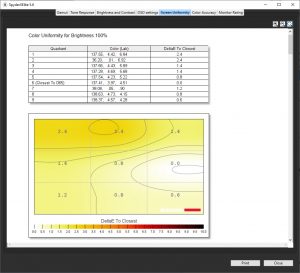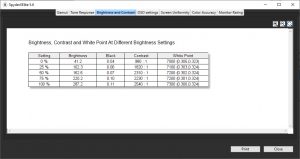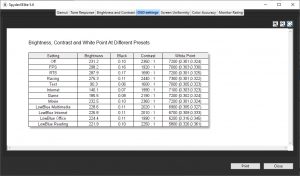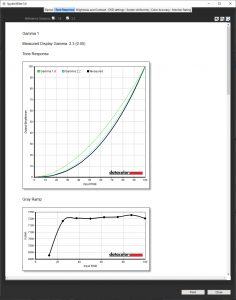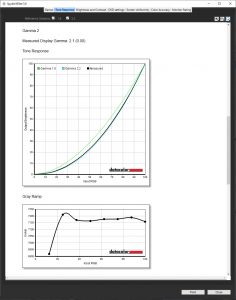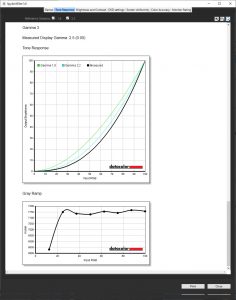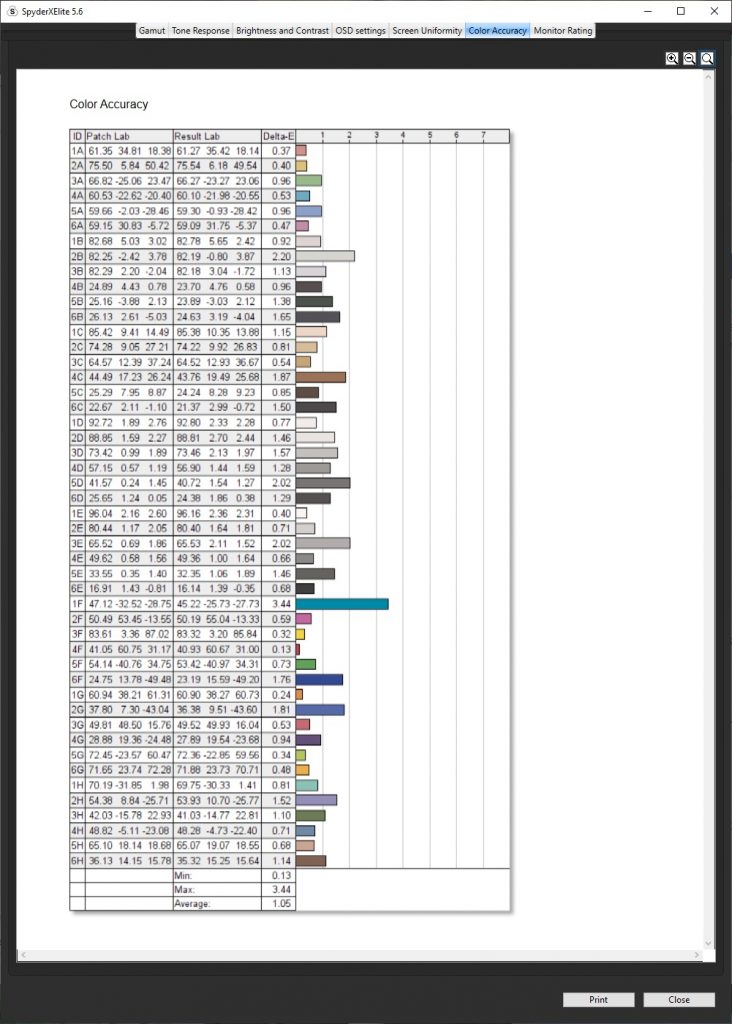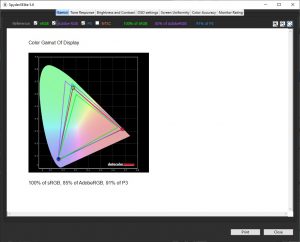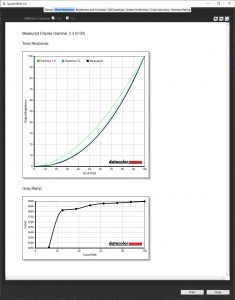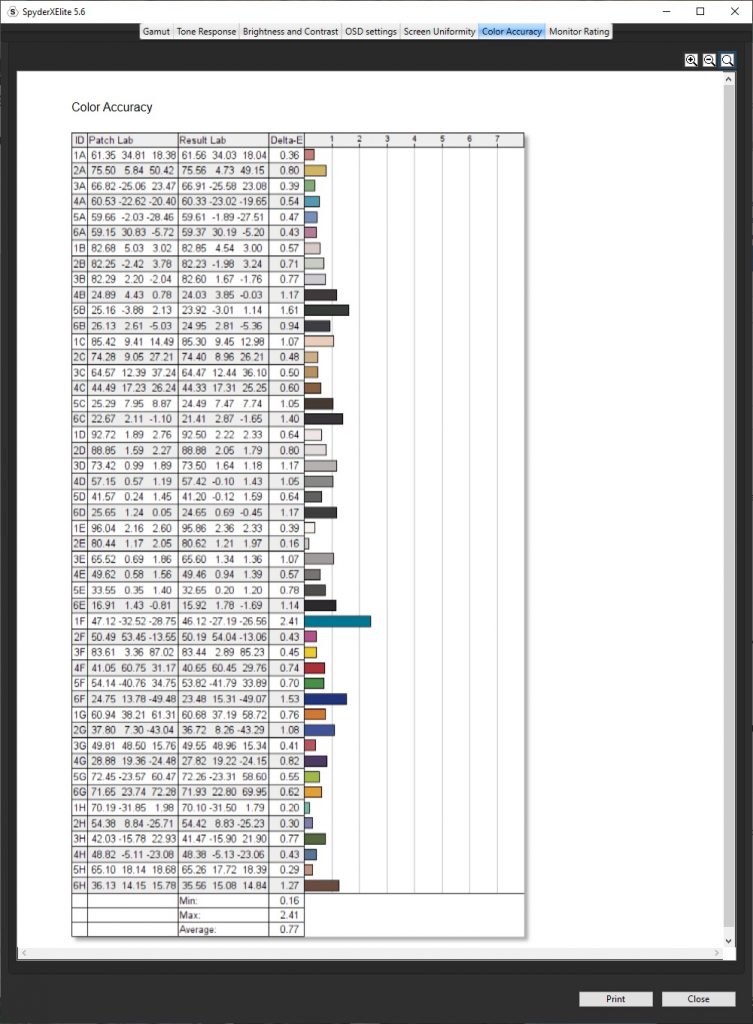Our main test involves using a DataColor SpyderX Colorimeter to assess a display’s image quality. The device sits on top of the screen while the software generates colour tones and patterns, which it compares against predetermined values to work out how accurate the screen is.
The results show –
- A monitor’s maximum brightness in candelas or cd/m2 at various levels set in the OSD.
- A monitor’s contrast ratio at various brightness levels in the OSD.
- The brightness deviation across the panel.
- The black and white points.
- The colour accuracy, expressed as a Delta E ratio, with a result under 3 being fine for normal use, and under 2 being great for colour-accurate design work.
- The exact gamma levels, with a comparison against preset settings in the OSD.
We first run this test with the display in its default, out-of-the-box state, with all settings on default after a factory reset. We then calibrate the screen using the Spyder software and run the test again.
We always test the display subjectively on the Windows desktop, using it for general tasks such as browsing and word processing, and with games as well, even if the display is not intended solely for that purpose.
We pay careful attention to any artefacts, ghosting or motion blur, and enable any gaming-specific features, such as adaptive-sync settings like G-Sync or FreeSync, using a compatible graphics card in our test PC.
We performed the quality tests on the AOC C27G2ZU at its native 1,920 x 1,080 resolution in the default mode, after resetting the OSD, which sets the refresh to 60Hz, over a DisplayPort connection. Our test system was equipped with an AMD Radeon Vega Frontier Edition graphics card, which supports FreeSync, so we enabled that for games testing.
The gamut gets things off to a decent start, with the 100 per cent sRGB we now expect from all monitors, plus an excellent 86 per cent AdobeRGB and 92 per cent DCI-P3.
Brightness uniformity is excellent as well, with just a few per cent difference in most areas, and the most aberrant area being the top middle at 5.1 per cent, which is hardly a problem. This is a very uniform monitor.
The colour uniformity is similarly excellent, with very little variance at any brightness level.
If there's one chink in the C27G2ZU's quality armour, it's that it's not a very bright monitor. The panel is rated at 300cd/m2, but even at 100 per cent brightness we only recorded 287.2cd/m2. However, contrast is great, hitting 2,540:1 at maximum brightness. The white point varies a bit from 7000K at 0 brightness to 7300K at 100 per cent. Note that the default colour preset is Warm, too.
With the Game Modes, Eco Modes and LightBlue Modes, there are absolutely tons of presets here. The FPS mode is the brightest, offering 298.2cd/m2 – brighter than the monitor can manage in Standard/Off mode. All the Game Modes are bright, starting with 275.3cd/m2 for Racing. This is also the highest contrast at 2,440:1, with RTS the lowest at 1,690:1. All the white points are from 7000K to 7300K across the Game Modes and Eco Modes.
The Eco Modes do offer a different set of brightnesses, with Text down to 90.3cd/m2, Internet at 140.1cd/m2, and Game at 185.5cd/m2. Interestingly, Movie mode is virtually indistinguishable from Off/Standard mode. Usually, this will have a cooler white point.
The LowBlue Modes, in contrast, all have around the same brightness, ranging from 221.9cd/m2 to 228.6cd/m2, and not much variation in contrast either, from 1,990:1 for Office and 2,250:1 for Reading. However, the white points do vary, with Reading dropping down to a warm 5800K, but Multimedia at 6900K, which is close to the standard setting.
As we've noticed before with AOC monitors, the gamma settings aren't sequential. The default Gamma 1 is the expected midrange option, although it reads a little high at 2.3. Gamma 2, however, is the lower alternative, and reads at 2.1. Gamma 3 is the higher choice, at 2.5. This is not a huge range of variation, and therefore not hugely useful.
Colour accuracy, however, is superb. The average deviation of just 1.05 out of the box is excellent. We didn't think we'd be able to improve much on this with calibration, but as always, we tried it anyway, firing up the SpyderX once more.
After calibration, the gamut has gone down slightly. You still get 100 per cent sRGB, but AdobeRGB and P3 have both dropped one per cent to 85 and 91 per cent respectively.
Gamma 1 remains at 2.3.
Colour accuracy, however, is even better, with a deviation of 0.77, which is close to the best we've ever seen.
Overall, then, we really can't fault this monitor for quality. It's not that bright (light-wise, not intelligence-wise), but otherwise the panel is extremely uniform and has great colour fidelity, straight out of the box, which is very commendable.
But this isn't a screen for CAD work, so we had to fire up our usual suite of games including CS:GO, Rainbow 6 Siege and League of Legends. We enabled the FPS Gaming Mode preset for the first two games, and RTS for LoL, as there wasn't a MOBA option and this was the closest alternative. We also made sure FreeSync was enabled.
With the Full HD resolution, we found our AMD Radeon Vega Frontier Edition graphics card could drive CS:GO at high enough frame rates to make the 240Hz ability worthwhile, and the result was very smooth. There was no sign of tearing, and with completely immersive frame delivery. Siege wasn't far off. LoL was, well, LoL. We do prefer this game with the biggest, highest resolution screen possible, though, so this perhaps isn't quite the optimum choice if you're a RTS/MOBA specialist. Otherwise, though, this screen delivers a consummate gaming experience.
Be sure to check out our sponsors store EKWB here
 KitGuru KitGuru.net – Tech News | Hardware News | Hardware Reviews | IOS | Mobile | Gaming | Graphics Cards
KitGuru KitGuru.net – Tech News | Hardware News | Hardware Reviews | IOS | Mobile | Gaming | Graphics Cards



